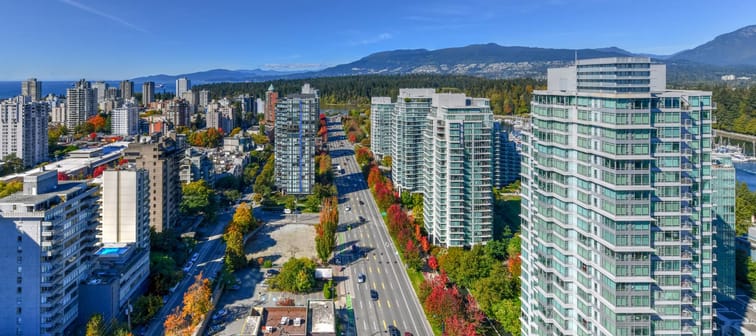A tale of two provinces
B.C. and Ontario offered different responses to this ongoing housing crisis. On March 28, B.C. introduced a new Homebuyer Protection Period. The goal is to curb the feeling of panic among buyers, where they feel pressured to put in offers without inspections or any other basic conditions. This can lead to buyers dropping out later on, losing a deposit, or simply being met with major repairs.
The “cooling off period” would allow time for homebuyers to consider offers, and get financing and an inspection. Regulations will be introduced later in the year to clarify the length of the cooling off period, and the financial penalty for backing out of an offer.
However, in a recent survey by the British Columbia Real Estate Association (BCREA), pollers found only about 35% of British Columbians support this idea of a cooling off period.
"[The] Property Law Act to create a cooling-off period in real estate transactions leaves B.C. consumers with more questions than answers," says BCREA chief executive officer Darlene K. Hyde. "A cooling-off period will likely increase competition for any given property, has the potential to increase prices and does not clearly take risks to sellers into account."
More from Money.ca
- Can a home price estimator keep you out of bidding wars?
- Will Ontario's plan for 1.5 million new homes change anything?
- Why you might want a variable mortgage, even when rates are on the rise
Meanwhile, Ontario Premier Doug Ford made his own announcement on April 1, introducing a plan to double the pace of housing construction, which would result in 1.5 million homes built in the province over 10 years. In the "More Homes for Everyone Plan," the idea is to build as many homes as possible, as fast as possible.
"The good news is [the government is] on the right track, and after decades of falling behind we saw record numbers of homes built in 2021. And 2022 looks like a good year again," says Tim Hudak, CEO of the Ontario Real Estate Association.
Yet New Democratic Party opposition leader Andrea Horwath argues the plan doesn’t include construction of duplexes and townhomes, which are the most affordable.
Unexpected vet bills don’t have to break the bank
Spot Pet Insurance offers coverage for treatment of accidents, illnesses, prescriptions drugs, emergency care and more.
Plus, their preventative care plan covers things like routine check-ups, microchip implantation, and vaccinations, if you want to give your pet the all-star treatment while you protect your bank account.
Get A QuoteBack to renting
So what does this mean for potential homebuyers seeking properties? It's time to shift your focus and think outside the box, Tal says. Sure, you could certainly move outside the large urban centres. But that's not a realistic option for many Canadians today.
"During the pandemic we saw people move out of the city… but now they’re coming back," Tal says. "Jobs are in the city, and although you can work from home this is not the early days of the pandemic, companies still want people in the workplace. Therefore moving away from the city is not exactly the ultimate solution."
What is the ultimate solution?
Renting, argues Tal. In Canada, and much of North America, there is a stigma around renting versus owning. And that stigma only worsens as the wage gap increases.
There continues to be an increase in wealthier parents gifting their children enough income to purchase a home. This leaves Canadians who don't come from a wealthy family at a disadvantage. That stigma continues to bleed into the real estate market.
"We have to create a different situation," says Tal. "In Germany, for example… you’re not a failure if you’re renting. Here it’s a problem."
Yet it's not as simple at just deciding to rent. There needs to be an initiative from the government to create more purpose-built rental apartments. The more this is done, the easier it will be to decide to rent instead of buy.
Canada’s top credit cards—find your perfect match!
Maximize rewards, save on interest, or earn cash back. Compare Canada’s best credit cards and pick the one that works for you!
Find Your Card NowUse what's already there
Yet while renting is certainly a part of the solution, Hudak argues that Canadians chasing the home-ownership dream should also have more options. And they're being met with red tape.
"It's become a cruel game of musical chairs, with more and more buyers circling fewer and fewer homes," Hudak says. "The solution is to increase housing supply...more choice creates more affordability in the marketplace."
It doesn't necessarily mean building more standalone homes, Hudak says. Instead, it might include using vacant commercial properties or under-utilized government properties to create mixed residential properties.
"We'd like to see more mixing of middle homes like a duplex, stack of townhomes, as these are often attractive for first-time homebuyers and empty nesters," Hudak says. "We also need to expand housing in approved but still undeveloped land in existing communities."
A generation of renters
Canadian house prices will continue to heat up, Tal says, but the government could take some of the pressure off by providing incentives for builders to create more apartments for the rental market.
"The more [rentals] we have, the less of a problem it will be," says Tal. "And if it comes in terms of tax incentives or other things, then so be it."
Hudak agrees that more options need to be made available, especially for those of modest means that are being shut out right now from entering the housing market.
"The challenge today is we're facing the potential in our province of having housing haves and have nots," Hudak says.
In the meantime, while creating a cooling off period or increasing the supply of single-family housing may help, it might not be enough to address the problem.
"It's a very complex issue," says Tal. "Demand is continuing to rise, and without a move it will get worse. Not better."
Trade Smarter, Today
Build your own investment portfolio with the CIBC Investor's Edge online and mobile trading platform and enjoy low commissions. Get 100 free trades and $200 or more cash back until March 31, 2025.







